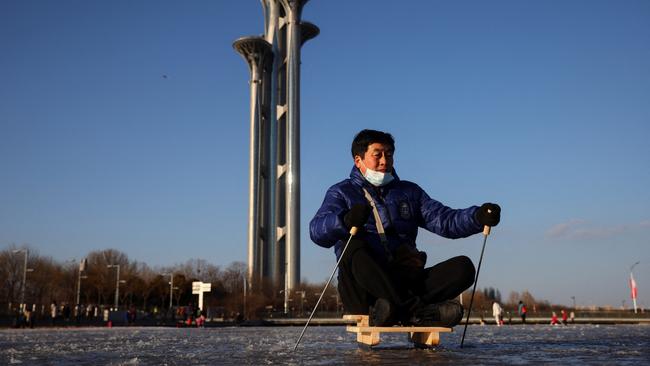Winter Olympics: Fake snow is fraught with danger, Beijing told
The threat will increase as more resorts lose natural snow cover due to climate change, according to researchers.

Reliance on fake snow will make the Beijing Winter Olympics more dangerous for athletes and the threat will increase as more resorts lose natural snow cover due to climate change, according to researchers.
The Beijing Games, which starts next week, will be the first Winter Olympics to rely almost entirely on artificial snow. Olympic skiers and snowboarders warn that the substance creates harder, faster surfaces, with solid ice forming on halfpipes and jump take-offs and landings.
Loughborough University in Leicestershire, England, says in a report that climate change is reducing the number of venues with reliable natural snow. Of the 21 venues used for the Winter Games since the first in Chamonix in 1924, it says that only 10 may have sufficient natural snowfall levels by 2050 and six by 2080.
Chamonix, in the French Alps, is one of the venues that may have to rely on artificial snow, along with Squaw Valley in the US, Vancouver in Canada, Garmisch-Partenkirchen in Germany, Sarajevo in Bosnia and Sochi in Russia.
Laura Donaldson, a freestyle skier from Scotland who competed in the 2002 Winter Olympics, told the researchers that if “freestyle superpipes are formed from snow-making machines in a poor (natural snow) season, the walls of the pipe are solid, vertical ice and the pipe floor is solid ice. This is dangerous for athletes. Some have died.”
The report notes that artificial snow is almost 30 per cent ice and 70 per cent air. Natural snow is closer to 10 per cent ice and 90 per cent air.
The report calls for more transparent assessments of the environmental impact of relying on artificial snow. It says 185 million litres of water are expected to be used to create snow for the games in Beijing, which already suffers from water shortages.
Chemicals can be added to enhance the quality of artificial snow and they may damage wildlife, it adds.
The report says that while the 2022 Winter Olympics will be watched and enjoyed by millions worldwide, it “should also provoke a debate about the future of snow sports and the limits of engineering artificial natural environments”.
The Times



To join the conversation, please log in. Don't have an account? Register
Join the conversation, you are commenting as Logout